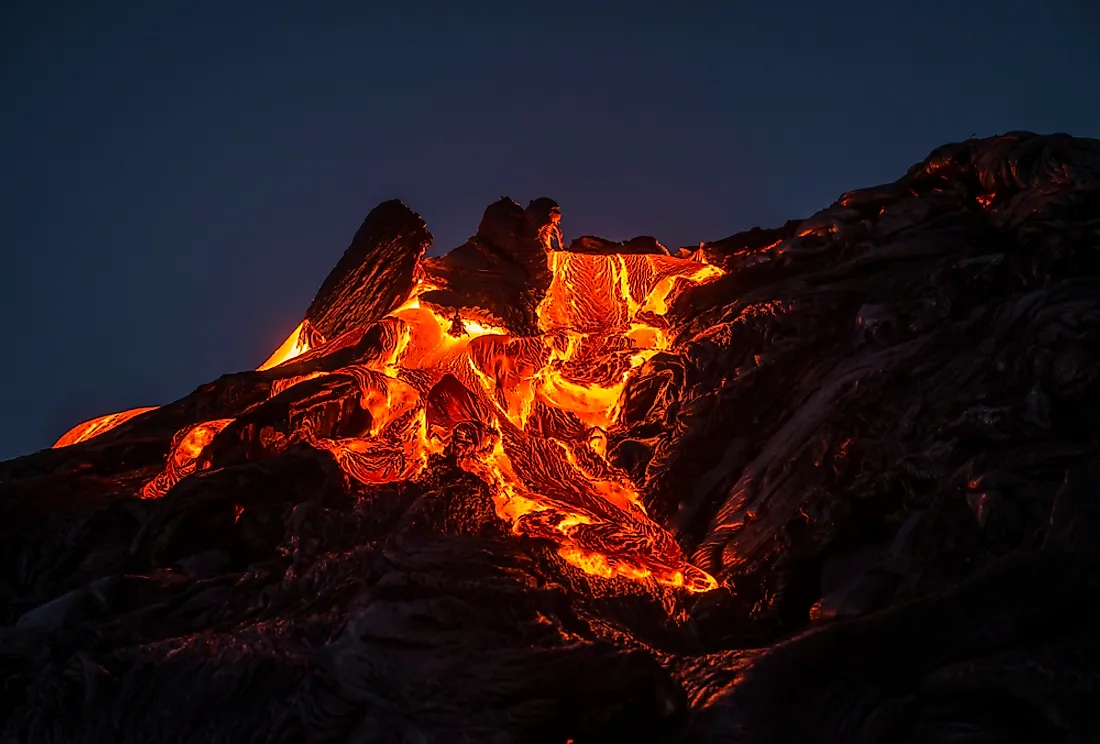Major Eruptions of Kilauea Volcano

Kīlauea is one of the five volcanoes that make up the island of Hawai'i and one of the earth's most active volcanoes. On May 3, 2018, a few hours after the island of Hawai'i had been struck by a magnitude 5.0 earthquake, Kīlauea erupted. Estimates from the Federal Emergency Management Agency indicate that so far more than 600 homes and 2,000 acres of land have been affected by the eruption.
Formation of Kilauea
There have been two theories put forward to explain the formation of the Hawaiian volcano chain due to their unusual location in the middle of the Pacific plate while most volcanoes are located on a tectonic boundary. One of the theories is the hotspot theory put forward by John Tuzo-Wilson, a Canadian geophysicist. He postulates that the formation of volcanic island chains such as Hawai’i was as a result of the movement of a tectonic plate over a fixed point of great heat in the earth's mantle. The other theory was put forward in 2011 by geologists from Purdue University and the Massachusetts Institute of Technology. Their study focused on mapping the layers of rock in the earth's crust. The scientists discovered a pancake-shaped layer of extremely hot rock far above the mantle. The temperature was more than 500 degrees Fahrenheit hotter than the usual range of temperature for that depth. This suggests that hotspots may not be permanently located in one spot or as deep as expected.
Eruption of the Kilauea Volcano
Geologists estimate the age of the volcano to be between 300,000 and 600,000 years old and that the volcano has been active for much of that time. The oral history of the native people of Hawai’i chronicles the eruption of the volcano long before the arrival of the Europeans. The first written records date back to 1794 with the first properly recorded eruption being in 1823. From 1823, there have been 61 separate eruptions with the volume of lava being emitted varying widely. The eruptions may last anywhere from a few days to a few years. One of the longest recorded eruptions began on May 24, 1969, and lasted for 867 days to October 8, 1971. Kilauea lay dormant for 18 years from 1934 to 1952, and in 1952 there was a large eruption of lava was thrown 800 feet high. The 1952 eruption lasted for 136 days after which there were subsequent eruptions in 1954 for three days, in 1955 for 88 days, and in 1959 for 36 days. In 1960, there was an eruption which covered the village of Kapoho and a significant amount of agricultural land. In 1967 there was a 251-day eruption. The most recent eruption began on January 3, 1983, and it is still ongoing making it the longest recorded eruption in the recorded history of Kilauea.
Impact of the Eruptions
The continuous eruption of the volcano has led to the large-scale destruction of property with entire villages being buried in lava. Breathing in the toxic gases released during the eruption can cause severe headaches and respiratory complications according to the University Orvis School of Nursing and studies.
Ecosystem in Hawaii
The island of Hawai’i is located about 2,000 miles from the closest landmass, and therefore it is one of the most isolated land masses on Earth. This isolation has had the greatest impact on its ecology. Most of the species found on the island are endemic and are not found anywhere else on Earth. As a result of the isolation, the species on the island followed an evolutionary path protected from the external biotic effect. This development makes the ecosystem on the island highly fragile and vulnerable to human developments and other invasive species. It is estimated that about a third of flora and fauna in the Island is extinct.











